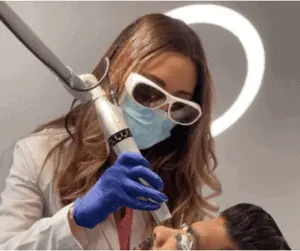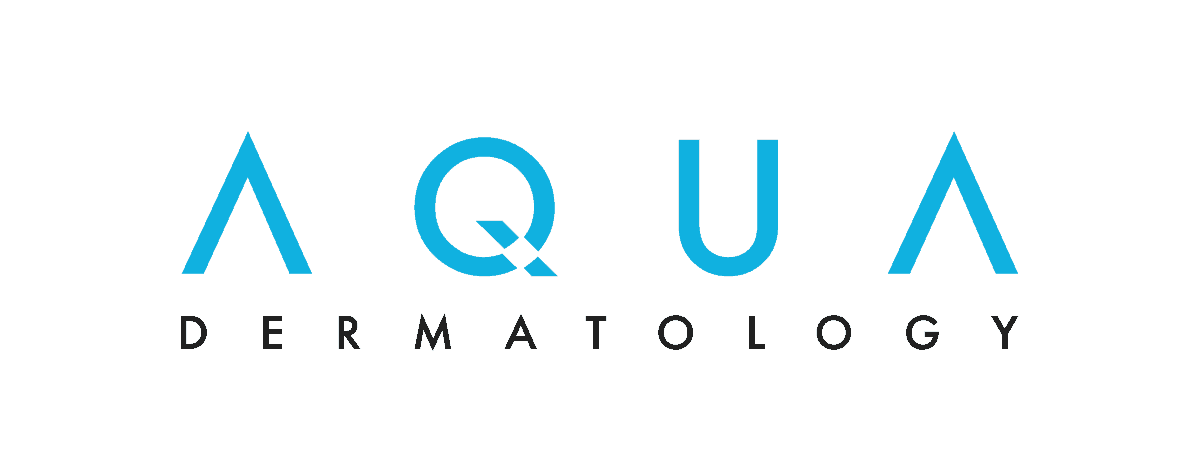
Medical Review By: Hector Valle, PA-C
When you think of spider veins, you probably picture skinny, red or bluish-purple squiggles on the legs. But tiny red spider veins can also appear on the face. Unlike leg veins, they can’t be covered up with clothing — but they can be treated, typically without surgery.
“Spider veins on the face aren’t quite the same as those that appear on the legs,” said Hector Valle, PA-C, a certified physician assistant at Water’s Edge Dermatology.
“Those on the legs are caused by vascular issues, such as faulty valves in the veins, which result in bulges in the veins that branch out into spider veins. But spider veins on the face are very tiny burst blood vessels that can usually be treated with less invasive procedures.”
What causes spider veins on the face?
There are several reasons you might develop spider veins, or telangiectasia, on your face. Some, such as genetics, are beyond your control. Cumulative sun exposure contributes to facial spider veins by damaging the skin and the veins right under the surface. Aging makes spider veins more noticeable due to the natural loss of collagen and thinning of the skin.
Trauma to the face is another common culprit. “You might develop spider veins if you get hit in the face or fall on your face, or from something less dramatic, such as squeezing your pimples,” Valle noted.
Anything that causes the tiny blood vessels in the face to dilate and burst can lead to spider veins, including:
- Smoking
- Heavy alcohol consumptions
- Hot weather
- Forceful coughing, sneezing or vomiting
- Pregnancy
- Childbirth
“Pregnant women are vulnerable to facial spider veins because the vessels pump more blood during pregnancy, which increases pressure in the veins,” Valle said. “It’s not unusual for these veins to burst because changes in estrogen levels that occur during pregnancy make the veins slightly weaker.”
Finally, you may be at increased risk of facial spider veins if you have certain conditions that affect the skin, such as lupus, rosacea, eczema, and acne.
Treatment for spider veins on the face
The treatment your skincare provider recommends will depend on the size of your spider veins, where they’re located, and, in some cases, the color of your skin. Options include:
Ohmic thermolysis (VeinGogh)
This minimally invasive procedure, also called VeinGogh, is often recommended for very fine spider veins, particularly those on the face, according to Valle. A topical anesthetic may be applied first. Next, a skinny needle is inserted just below the skin but above the vein. The needle delivers small bursts of energy to heat the vein, causing blood to coagulate and forcing the vein walls to collapse. The remnants of the vein are absorbed by the body’s tissues.
VeinGogh is often the procedure of choice for people with darker skin since they are more likely to develop discoloration from certain other spider vein treatments. “It targets the vein very precisely, while other treatments may also attack the melanocytes, which are the pigment-producing cells in your skin,” Valle explained. “If this occurs, patches of lighter skin called hypopigmentation may appear, and in many cases these patches are permanent.”
Possible side effects: Mild redness and a very small risk of scarring.
Surface laser therapy
Surface laser therapies also heat and destroy spider veins, but no needles are involved. Instead, the provider positions a device above the affected area that delivers either laser light or intense pulsed light (IPL) to the veins, causing them to collapse.
The treatments are popular among people who are afraid of needles, but they may not be the best option for darker skin. “They’re somewhat less precise than ohmic thermolysis and could affect the melanocytes,” Valle said.
Possible side effects: Discoloration (which can be temporary or permanent) and blistering. You may need several treatments to get the best results.
Microphlebectomy
Microphlebectomy is a more invasive procedure and isn’t typically used to treat facial spider veins. “But it may be recommended if you have prominent spider veins on your forehead or temples, which can be a little larger,” said Valle.
After applying a topical anesthetic, the provider makes tiny incisions in the skin and inserts a hooked instrument to extract the spider veins. The incisions are so small that stitches aren’t needed and there’s no risk of scarring.
According to Valle, it’s important to find an experienced practitioner if you need microphlebectomy because it’s a more challenging procedure to perform.
Possible side effects: Discoloration and mild pain and bruising near the incisions. The incisions may bleed or feel numb, but this is rare.
Ultrasound-guided foam sclerotherapy
Using ultrasound to guide the placement of the needle, the provider injects an irritant into the affected vein, causing it to scar. Blood is re-routed to healthier veins, and the treated vein is absorbed into nearby tissue.
This treatment isn’t typically used on facial veins, but it may be used on more prominent spider veins around the eyes and mouth. “The veins in these areas are close to important arteries, so the use of ultrasound helps ensure these arteries won’t be injected accidentally,” said Valle.
Possible side effects: Bruising, raised red areas, small sores, and darkened lines or spots near the injection site, all temporary.
Regardless of which treatment you choose for spider veins on the face, the downtime is minimal, according to Valle. You may need to avoid the sun and strenuous, high-impact activities for a few days afterward.
“Treatments for spider veins are very safe and have few risks,” said Valle. “And while it can take four to six weeks to fully heal from these procedures, you may see results sooner than that.”
Article Written By: Jessica Brown, a health and science writer/editor based in Brooklyn, New York. She has written for Prevention magazine, jnj.com, BCRF.org, and many other outlets.





